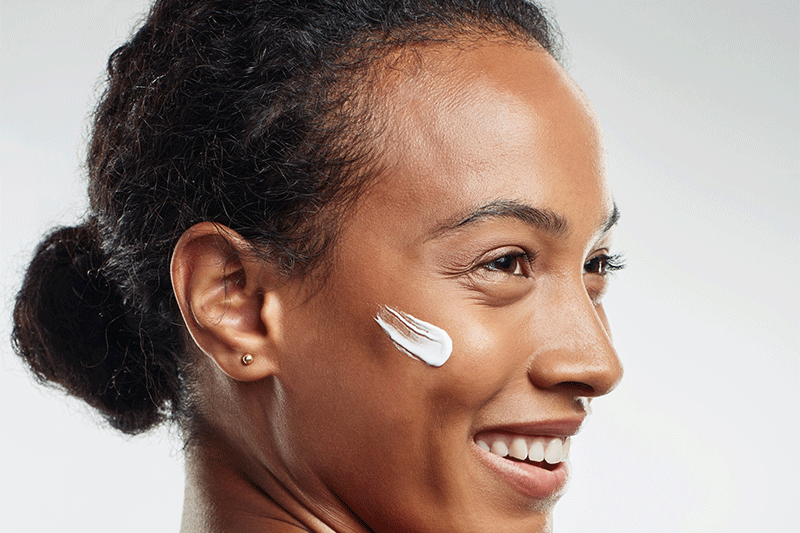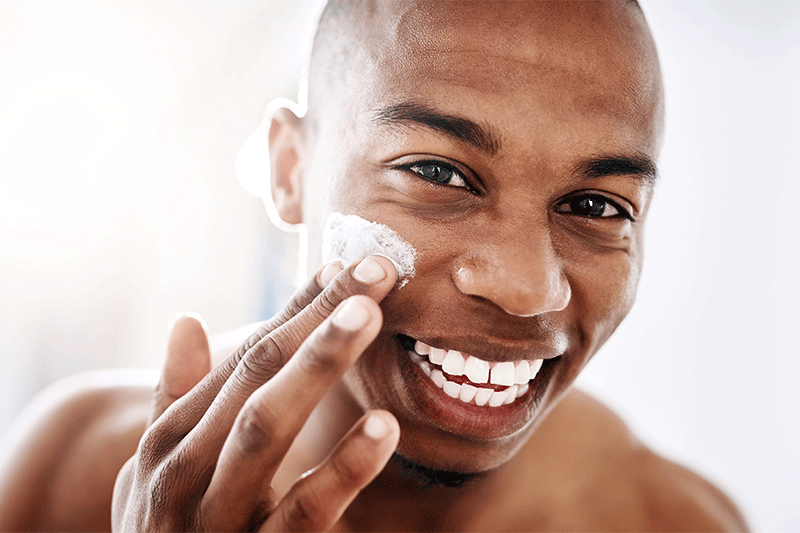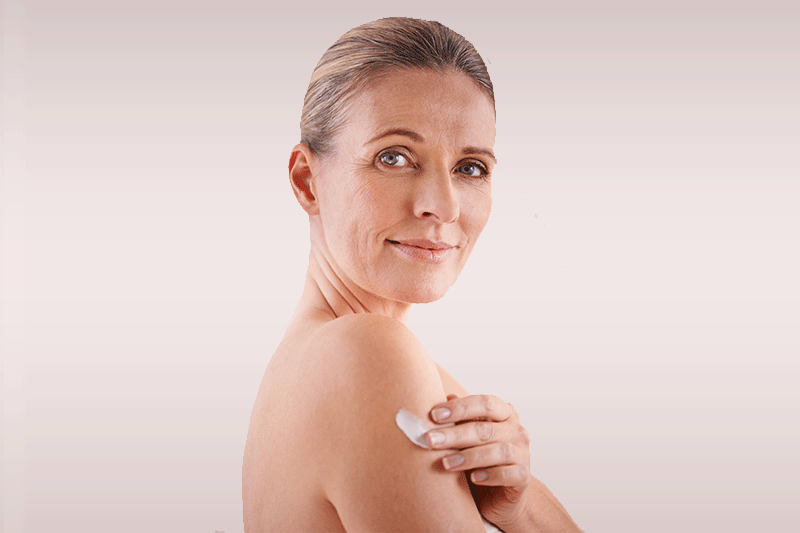How to pick the right moisturizer for your skin

For most people, dry skin can be easily remedied by adjusting their moisturizing routine. But with hundreds of product options, where do you even begin? To help you decide, we asked board-certified dermatologists from the American Academy of Dermatology to weigh in on the best moisturizer for each skin type. Here’s what they said.
First, know your emollient options
“There’s definitely not a one-size-fits-all for all skin types,” says Rebecca Kazin, MD, FAAD, a board-certified dermatologist in Bethesda. Rather, moisturizer — which works by putting moisture into the skin, as well as preventing water from leaving the skin — can describe a number of different products, including lotions, gels, creams, and ointments. There are subtle differences among them. A gel is often water-based and tends to feel lighter on the skin than a lotion. A cream is thicker and has higher oil content than a lotion and gel, making it more hydrating. An ointment is the thickest of all, making it the most effective in remedying dry skin. Emollients in these moisturizers keep your skin soft and smooth.
Next, know your skin type
Choosing the right moisturizer for you depends on your skin type and the severity of dryness you’re experiencing. Jason A. Clark, MD, FAAD, a board-certified dermatologist in Atlanta, says that for the most precise, tailored advice for your skin type, it helps to visit a dermatologist. But for general purposes, follow this guide.
Normal skin: If you’re experiencing seasonal dryness in otherwise-normal skin, Dr. Clark says lotion is sufficient for most younger people. With age, however, the skin holds less moisture and needs more assistance. Dr. Kazin says that perimenopausal people and everyone 50 and older should be using a cream-based moisturizer.

Dry skin: If your skin tends to be dry, and winter is making it even more so, Dr. Clark says to skip the lotion and go for something thicker and more effective. “Creams are going to add more moisture to the skin and preserve more water than lotion, and ointments even more so,” he says. “So, somebody with dry skin is going to want to start with a cream or ointment and bypass lotions altogether.”
Oily skin: For some people, too much moisturizer can clog pores and lead to acne; in people with black or brown skin, acne can cause discoloration and hyperpigmentation. Dr. Clark recommends considering skipping the moisturizer or opt for a gel, which is lighter than other types of moisturizer.
Combination dry and oily skin: If you have combination skin, your skin is dry in some spots and oily in others — often in what’s called the “T-zone,” which is the T-shaped area on your face that includes your forehead, nose, and chin. Dr. Kazin tells these patients to treat their face as though it’s two faces: moisturize the dry spots and skip the oily areas. “I tell some people never put moisturizer on the center of your face,” says Dr. Kazin. “It’s like a huge revelation that your nose probably never needs moisturizer.”
Finally, follow these dry-skin do's and don’ts
Do
Put on moisturizer right after you get out of the shower: When your skin is damp, thicker creams and ointments spread more easily, and the moisturizer is more effective because it traps water in the skin and keeps it from evaporating, says Dr. Clark. “Apply moisturizer to your skin right after you get out of the shower to prevent water loss,” he says.
Listen to your skin: It’s great to have a skin care routine, but it’s important to switch it up in some instances, such as adjusting for a different season, says Dr. Kazin. That said, be careful about new products that you introduce. Avoid products with alcohol, alpha-hydroxy acid (AHA), and fragrance to help your skin retain its natural oils.
Pay attention to certain ingredients: Dr. Kazin says that if you scan the ingredient list of a moisturizer, look for things such as ceramides, which are waxy lipid molecules that help hydrate skin, and hyaluronic acid, which is also known for its intense moisturizing qualities. She says to avoid items with fragrances, because they can be irritating to dry skin. And for people with sensitive skin, she cautions them away from organic skin care lines, because a lot of the ingredients can aggravate allergies. “The dermatologist’s favorite joke is that ‘poison ivy' is all natural,” she says. “So, all natural in no way means hypoallergenic.”
Don’t
Forget the sun protection: The sun and other types of light cause damage all year long. Protecting your skin from the sun by seeking shade when appropriate, wearing sun-protective clothing, and applying broad-spectrum sunscreen with an SPF of 30 or higher should be a part of your daily routine, regardless of how dark or light your complexion. “Besides protecting against skin cancer, sunscreen is the No. 1 anti-aging treatment we know of,” says Dr. Kazin. “It shouldn’t be an extra step. It should be one of those steps that you already do.”
Exfoliate: Dr. Kazin says that people often make the mistake of exfoliating dry, peeling skin in the winter, further stripping it of moisture. Instead, she says, they should be moisturizing. “You don’t want to strip your face too much, because then you end up putting on too much moisturizer and then you end up with dry skin and pimples, which is a problem,” she says.
How dry am I?

First, select a fragrance-free cleanser or moisturizing body wash. Then, pick a moisturizer you feel comfortable using at least twice a day. Make sure it is labeled as “non-comedogenic,” meaning it doesn't block pores. If that doesn’t seem to help, or if the dryness gets worse and becomes painful, cracked, bleeding, stinging, or very irritating, he says to make an appointment with a dermatologist. “You may need a prescription and help optimizing your home skin care routine,” he says.
Related AAD resources
Last updated: 1/25/22
 Atopic dermatitis: More FDA-approved treatments
Atopic dermatitis: More FDA-approved treatments
 Biosimilars: 14 FAQs
Biosimilars: 14 FAQs
 How to trim your nails
How to trim your nails
 Relieve uncontrollably itchy skin
Relieve uncontrollably itchy skin
 Fade dark spots
Fade dark spots
 Untreatable razor bumps or acne?
Untreatable razor bumps or acne?
 Tattoo removal
Tattoo removal
 Scar treatment
Scar treatment
 Free materials to help raise skin cancer awareness
Free materials to help raise skin cancer awareness
 Dermatologist-approved lesson plans, activities you can use
Dermatologist-approved lesson plans, activities you can use
 Find a Dermatologist
Find a Dermatologist
 What is a dermatologist?
What is a dermatologist?